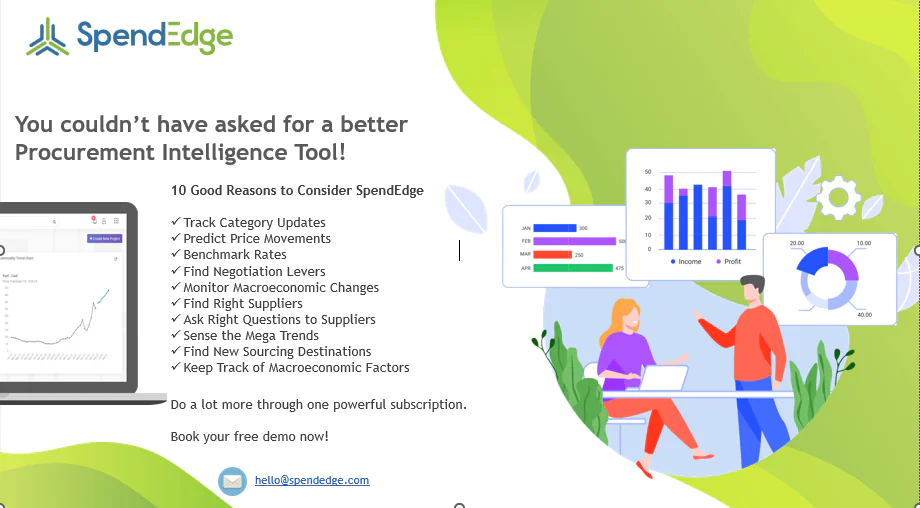Every supply chain management process involves designing, planning, executing, controlling, and monitoring of supply chain activities. It helps in building a competitive infrastructure, creating net value, supporting worldwide logistics, bringing demand and supply in synchronization, and measuring performance globally. The supply chain manufacturing process is said to be the unsung hero of the manufacturing sector and it is the foundation that acts as a support system for every manufacturing business.
Importance and Key Concept
Efficient supply chain management is the backbone of organizational operations, impacting various facets of business functionality. Smooth supply chain processes are imperative to prevent disruptions that can stall production and result in significant losses. Supply chain management holds paramount importance as it enhances customer service, curtails operational expenses, and bolsters the financial health of an organization. Beyond business realms, supply chain management also fulfills societal obligations by sustaining critical sectors like healthcare and energy, elevating living standards, and nurturing cultural progression. To achieve seamless supply chain management, it’s crucial to navigate through five indispensable steps.
Steps for a Successful Supply Chain Management Process
-
The planning phase is essential for establishing a strategic framework that aligns supply chain operations with customer demand. It involves analyzing market trends and internal capabilities to optimize resources, ensuring that production and distribution processes are efficient and responsive.
-
In the sourcing component, organizations identify and evaluate reliable suppliers to secure the necessary raw materials for production. Establishing strong supplier relationships is crucial for maintaining quality and ensuring timely delivery, which directly impacts overall supply chain performance.
-
The execution phase translates strategic plans into actual products through coordinated manufacturing processes. This step emphasizes the importance of resource allocation and quality control to ensure that the final output meets customer expectations and operational efficiency.
-
During the delivery phase, supply chain managers focus on ensuring that products are delivered accurately and punctually to customers. Utilizing modern technology for tracking shipments and managing logistics is vital for optimizing delivery processes and enhancing customer satisfaction.
-
The returns phase involves managing returned products effectively, including conducting quality checks and reintegrating items into inventory. Well-structured returns process not only addresses customer concerns but also provides insights for improving product quality and overall supply chain efficiency.
Key Components Involved in the Process
Sourcing and procurement:
Sourcing and procurement involve identifying and selecting reliable, cost-effective suppliers to procure goods. Building strong supplier relationships and negotiating favorable terms is crucial in this process.
Inventory management:
Inventory management is a multifaceted process that involves balancing inventory levels, implementing advanced inventory tracking technologies, and integrating inventory with inventory management software. To optimize inventory accuracy, order optimization, and error reduction, businesses may deploy inventory technologies.
Logistics and distribution:
Logistics and distribution encompass the strategic coordination of transportation routes, leveraging cutting-edge technology for efficient movement of goods. This includes the meticulous management of warehouse systems, ensuring seamless flow from storage to delivery points, ultimately enhancing overall operational efficacy and customer satisfaction.
Demand planning:
Demand planning is essential for inventory-based businesses to anticipate future needs. It relies on historical data, market trends, and collaboration with internal stakeholders, along with statistical models and technology supporting demand forecasting.
Unlock the Power of Efficient Supply Chain Management Today – Get Your Free, Expert Consultation and Discover How We Can Help Optimize Your Operations for Long-Term Success…
How Does Supply Chain Management (SCM) Work?
-
Planning:
The SCM process begins with strategic planning. This involves forecasting demand, setting production targets, and determining the overall supply chain strategy. Organizations need to analyze market trends, historical data, and other factors to estimate future demand accurately.
-
Sourcing:
Once the production targets are set, the next step is sourcing raw materials and components. Organizations need to identify reliable suppliers, negotiate contracts, and establish terms for procurement. Supplier relationships are crucial for ensuring a stable supply of quality materials.
-
Production:
This phase involves converting raw materials into finished products. Efficient production processes are essential to meet demand while minimizing waste and operational costs. Technologies like lean manufacturing and Just-In-Time (JIT) production help optimize this stage.
-
Logistics:
Logistics encompass the movement of goods, involving transportation, warehousing, and distribution. It's essential to choose the right transportation modes, routes, and storage facilities to ensure timely and cost-effective delivery.
-
Information flow:
Communication and data exchange play a vital role in SCM. Timely and accurate information sharing enables organizations to make informed decisions, respond to changes in demand or supply, and coordinate activities across the supply chain.
-
Performance:
Continuously monitoring and measuring supply chain performance is crucial for identifying areas of improvement. Key performance indicators (KPIs) such as on-time delivery, inventory turnover, and lead times help assess the efficiency and effectiveness of the supply chain.
-
Risk and sustainability:
Effective risk management strategies involve identifying potential risks, developing contingency plans, and building resilience in the supply chain. As environmental concerns grow, sustainable practices in SCM become more important. This includes reducing carbon emissions, minimizing waste, and adopting ethical sourcing practices.
Supply Chain Best Practices
1. Focus on continuous improvement
Supply chain management processes require constant monitoring and upgrading as even the most efficient process can become obsolete quickly. To be prepared to pivot and change processes, supply chain organizations can establish a culture of continuous improvement. This mindset encourages innovation, learning, and adaptation. Leaders can foster this culture by taking a top-down approach and demonstrating the value of improvement initiatives through visible support and participation. It’s crucial to engage employees during the improvement process and provide ongoing training and development opportunities for employees to stay updated on industry best practices, emerging technologies, and evolving market trends
2. Data usage: Success monitoring
Identify and monitor metrics and data that align with the specific goals of your supply chain business to determine how your processes are performing. For example, monitor metrics such as on-time delivery rates, inventory turnover, lead times, customer satisfaction scores, and cost-effectiveness metrics. Benchmark performance for your organization, employees, and vendors, and compare it against industry standards and other top-performing organizations. Use these insights to determine where you can improve and where you can fill gaps that your competitors are missing.
3. Regularly update: supply chain management process
Develop a structured regimen for ongoing assessment of the supply chain management process to uphold its relevance and achieve desired outcomes. Consistently evaluate the efficiency of individual elements, taking into account shifts in market dynamics, technological advancements, and customer demands. Utilize data analytics, inventory metrics, staff input, and other sources of insight to pinpoint areas of improvement and refinement. Embrace contemporary technologies to elevate operational efficiencies, while exploring upgrades that offer critical enhancements and functionalities.
Ready to Transform Your Supply Chain for Maximum Efficiency? Start Optimizing Today with Tailored Insights and Strategies – Contact Us Now to Begin Your Journey Towards Operational Excellence…

Conclusion
Effective supply chain management is imperative for organizational success, especially in today’s dynamic business landscape marked by constant change and challenges. By implementing robust strategies and best practices, businesses can mitigate risks, navigate vendor disruptions, and foster strong supplier relationships, ultimately enhancing overall performance and resilience. Key components such as risk management, supplier relationships, and performance metrics are vital for maintaining supply chain integrity and efficiency. Leveraging tools like supplier scorecards and performance analysis helps organizations proactively address supply chain disruptions and optimize vendor relationships. To stay ahead in the market, supply chain teams and procurement departments must prioritize continuous improvement and innovation. By regularly updating processes, analyzing supplier data, and refining performance metrics, organizations can adapt to evolving market dynamics and drive sustainable growth. By embracing supplier performance strategies and trends, businesses can cultivate successful supplier-buyer relationships, minimize supply chain disruptions, and achieve operational excellence.





